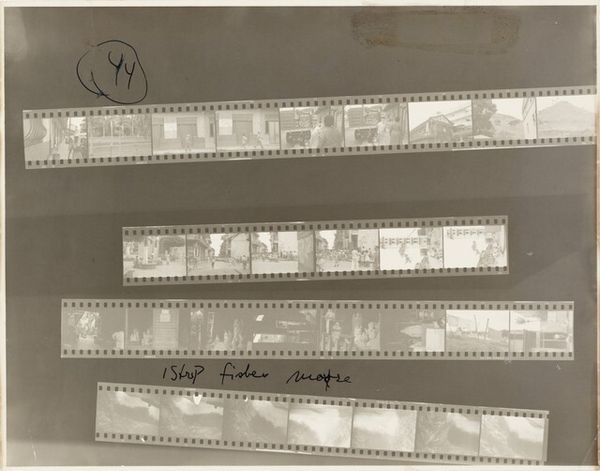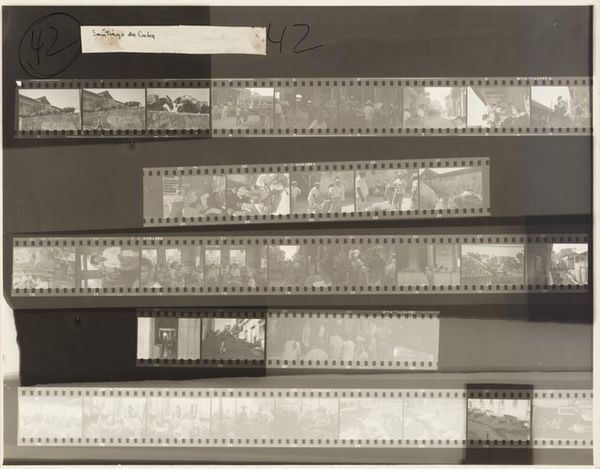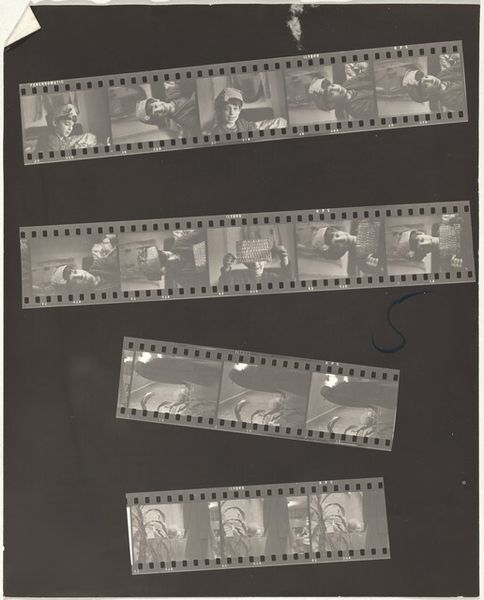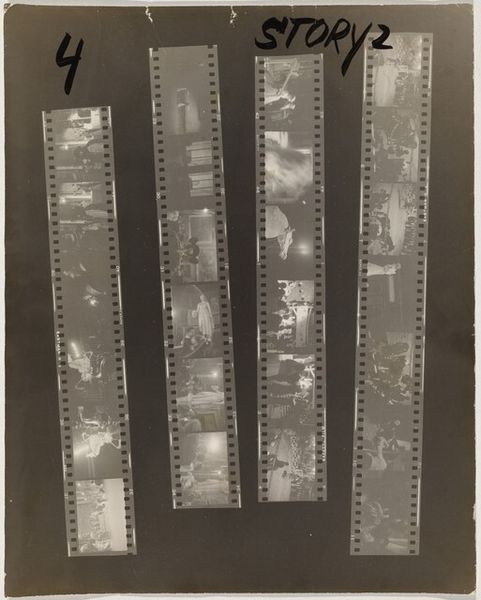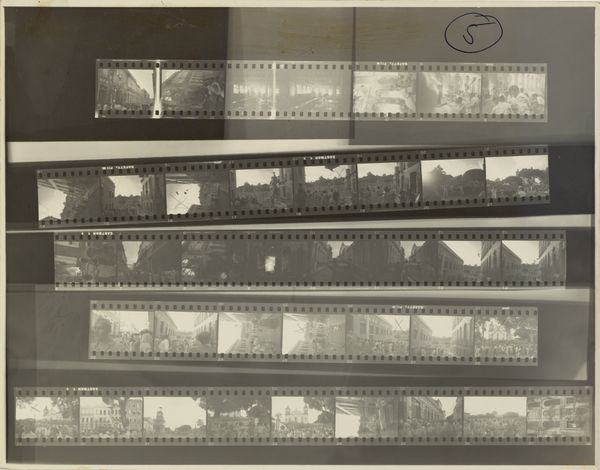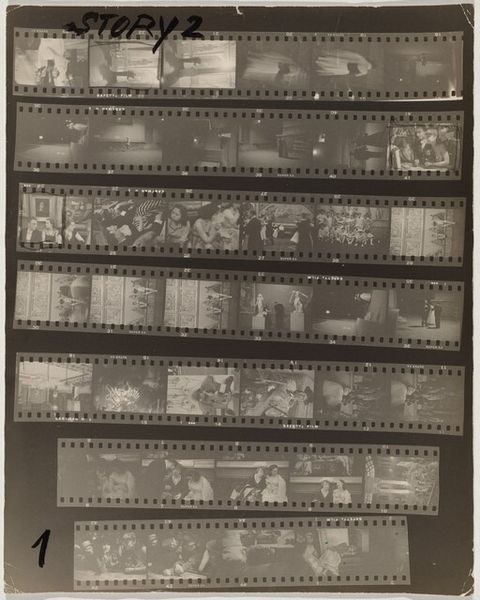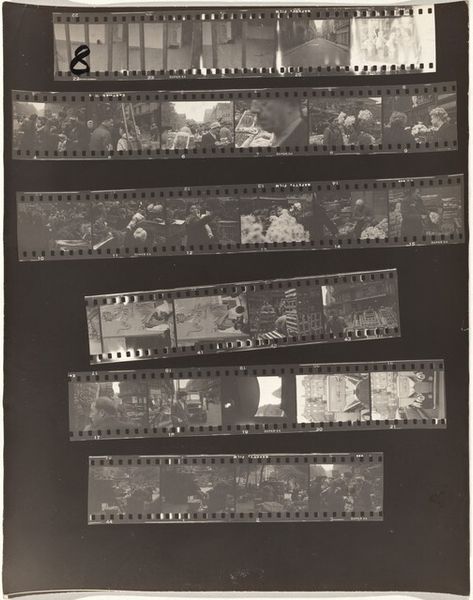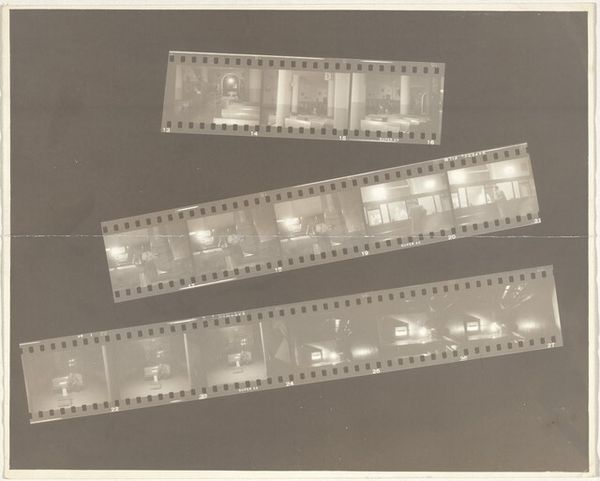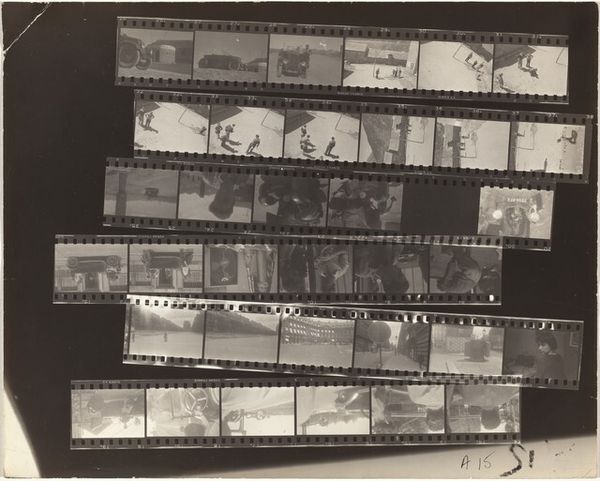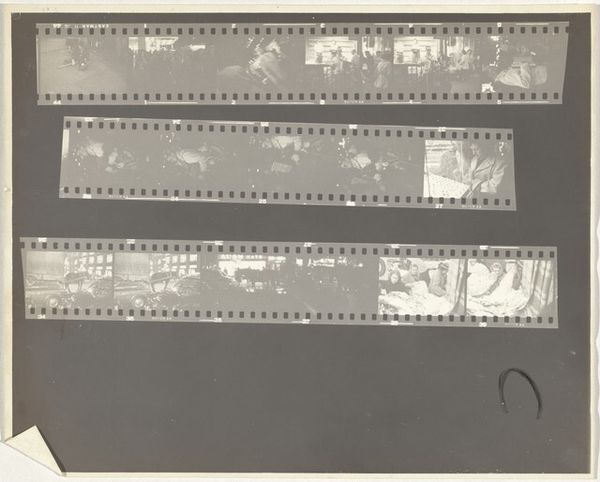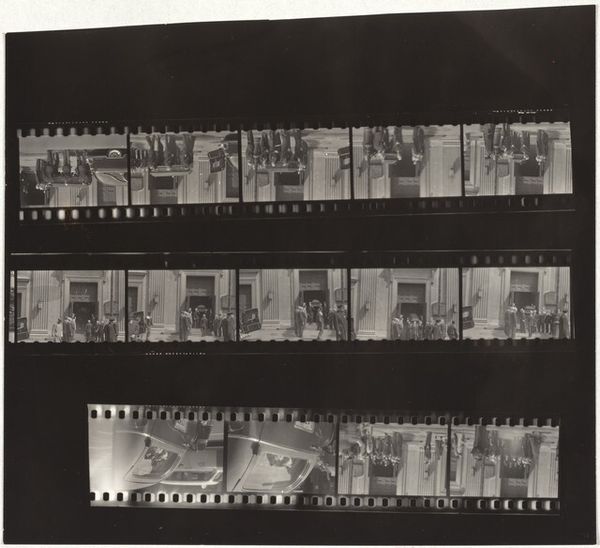
print, photography, gelatin-silver-print
# print
#
archive photography
#
street-photography
#
photography
#
photojournalism
#
gelatin-silver-print
#
modernism
Dimensions: sheet: 27.8 x 35.4 cm (10 15/16 x 13 15/16 in.)
Copyright: National Gallery of Art: CC0 1.0
Curator: Here we have Robert Frank’s “Peru 43,” a gelatin silver print made in 1948. What are your first thoughts on this? Editor: My first thought is texture. I see the physical strips of film laid out – the emulsion, the sprockets, the visible numbers—it really foregrounds the materiality of the photographic process itself. Curator: Absolutely. Frank's presentation moves photography away from just capturing a moment. He actually reveals his process, inviting us to consider the act of taking, selecting, and ordering photographs. His later work in "The Americans" pushed this further, didn’t it? Editor: Yes, it is like he gives the raw materials of his artistic labour, unearthing the means of production to give insight to its manufacture, inviting the audience to become an active interpreter of the work. I like how we can view each frame, and by studying the sprockets we become invested into what film was used. Curator: He certainly seems to be emphasizing that point of view in its truest sense. How do you see that manifested in “Peru 43"? Editor: It's clear. Frank presents photography, not just as a method of capturing events, but he includes himself by displaying physical process itself. These photo-essays can be so powerfully mediated – yet, this material form gives the impression he wants to reduce any barrier between subject and viewer. He doesn’t hide the edits. Curator: Interesting, because as you note, the act of editing itself shapes so much meaning. By arranging these film strips, he creates a narrative—but one that is suggestive rather than didactic. Frank gives voice, then removes the stage. Editor: Exactly! Each frame has equal weighting. You become invested into the production and what each element contributes to the whole. It disrupts that classical high art narrative of singular vision by highlighting what photography physically is. Curator: It becomes about a specific type of labor – almost manual or handicraft even - as a mode of artistic expression in the modern world. It's an interesting twist on the documentary tradition and street photography’s purported claim to capturing raw, unfiltered reality. Editor: Definitely. Looking at this artwork, I am considering its ability to expose the bare reality behind making such artworks. This creates an authentic aura surrounding its artistic statement. Curator: Well, considering all this, I think we've really begun to unpack the many social and historical dimensions layered into Frank's piece, through his unusual focus on form and materials. Editor: Agreed. And I love the dialogue it sparks about photography and artistic intention through something so seemingly simple as displaying film.
Comments
No comments
Be the first to comment and join the conversation on the ultimate creative platform.
